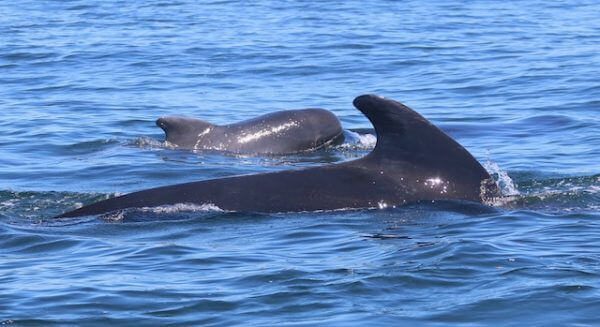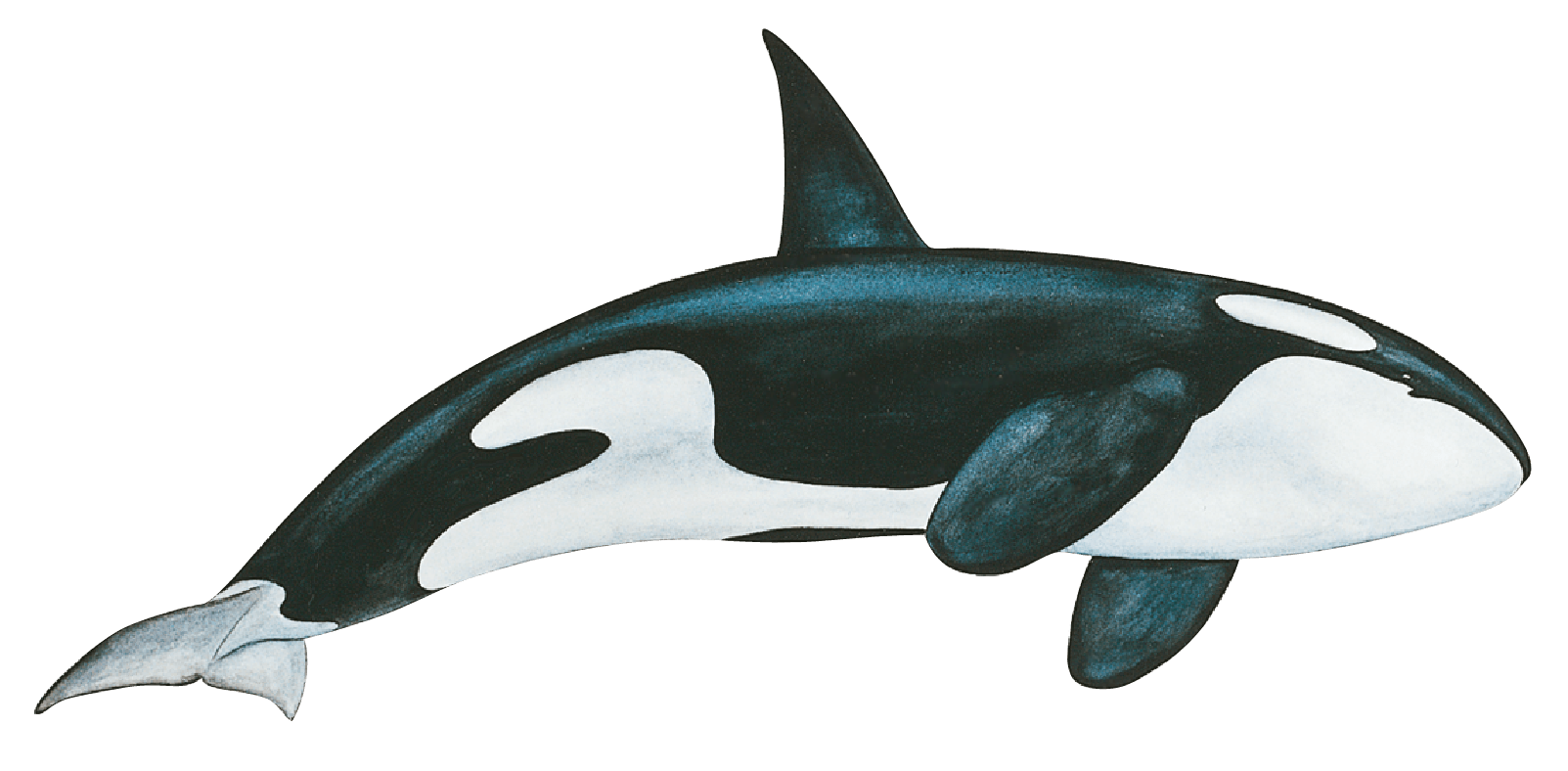Feeding
The long-finned pilot whale feeds essentially on squid and mackerel that it finds in the water column, though it will occasionally eat shrimp and other fish species (cod, plaice). It sometimes teams up with other species such as the Atlantic white-sided dolphin to hunt.
On the surface
Long-finned pilot whales are relatively fast swimmers and can reach speeds of 35 km/h when being chased by a predator. Like dolphins, their swimming is characterized by successive leaps and bounds. They are capable of jumping out of the water, but rarely do so. They do not approach ships or play in their bow waves or wake. They often engage in spyhopping and lobtailing. When resting, they typically remain motionless at the surface.
Diving
Dives last 5 to 10 minutes on average, most often to depths in the range of 30 to 500 m, where the species’ prey is found. They can reach 1000 m and last as long as 15 minutes, however.
Social
The long-finned pilot whale is highly gregarious. Herds of several hundred individuals dispersed across the ocean are composed of stable family units of 10 to 20 members. These units are formed around adult females and their offspring. Males generally leave the family unit to reproduce and later return to the group they were born into. There, they assume the role of protector against predators, which might explain their shorter life expectancy compared to females. During the mating period, males can inflict injury or even death on one another with bites and violent blows to the head. These large pods are characterized by a very high level of social cohesion. Mass strandings involving hundreds of individuals are not unheard of. Several theories exist to explain such occurrences. Are they caused by navigation error, an infectious or parasitic disease within the pod, an extreme behaviour of solidarity toward a group member that is sick, injured or in distress? This pilot whale species may also associate with groups of dolphins as well as with larger cetaceans.
Vocalization
The pilot whale has a highly varied and complex vocal repertoire, which consists of whistles, clicks, pulsing sounds, grunts, screams and buzzing noises. These sounds are used for communication between individuals and echolocation.








